Abstract
STUDY OBJECTIVE--The aim was to identify socioeconomic variables associated with deaths and hospital admissions due to hypothermia and to quantify the risk due to ambient outside temperature. DESIGN--The study was a survey of deaths and hospital admissions due to hypothermia (ICD 991.6), for the period 1979-85 inclusive, identified from death certificates and Hospital Inpatient Enquiry (HIPE) data. SETTING--The study included all deaths and hospital admissions due to hypothermia (1979-85) in the 26 counties of the Republic of Ireland, population 3.5 million. SUBJECTS--All deaths coded during the study period as being due to hypothermia and all persons admitted to hospital during the study period for whom hypothermia was recorded as a discharge diagnosis in HIPE data. MEASUREMENTS AND MAIN RESULTS--Demographic data and date of death/diagnosis were obtained from both data sets. Complete national temperature records were obtained from the meteorological service and a temperature was assigned to each case representing ambient outside temperature at which hypothermia developed. Risk of hypothermia at a given temperature was obtained by dividing the number of cases at that temperature by the appropriate person-years of exposure of the entire national population. Incidence of and mortality from hypothermia doubled with each 5 degrees C and 4 degrees C fall in temperature respectively; the majority of deaths and hospital admissions occurred between October and March. Incidence and mortality increased with age and men had 30% higher case fatality than women. Single men had four times the incidence and 6.5 times the mortality, and single women had double the incidence and four times the mortality of married men and women respectively. Low population density was also an important risk marker. CONCLUSIONS--The risk of hypothermia due to ambient outside temperature has been quantified and a high risk group was identified. A combination of statutory support measures and good neighbourliness could prevent illness and deaths from hypothermia.
Full text
PDF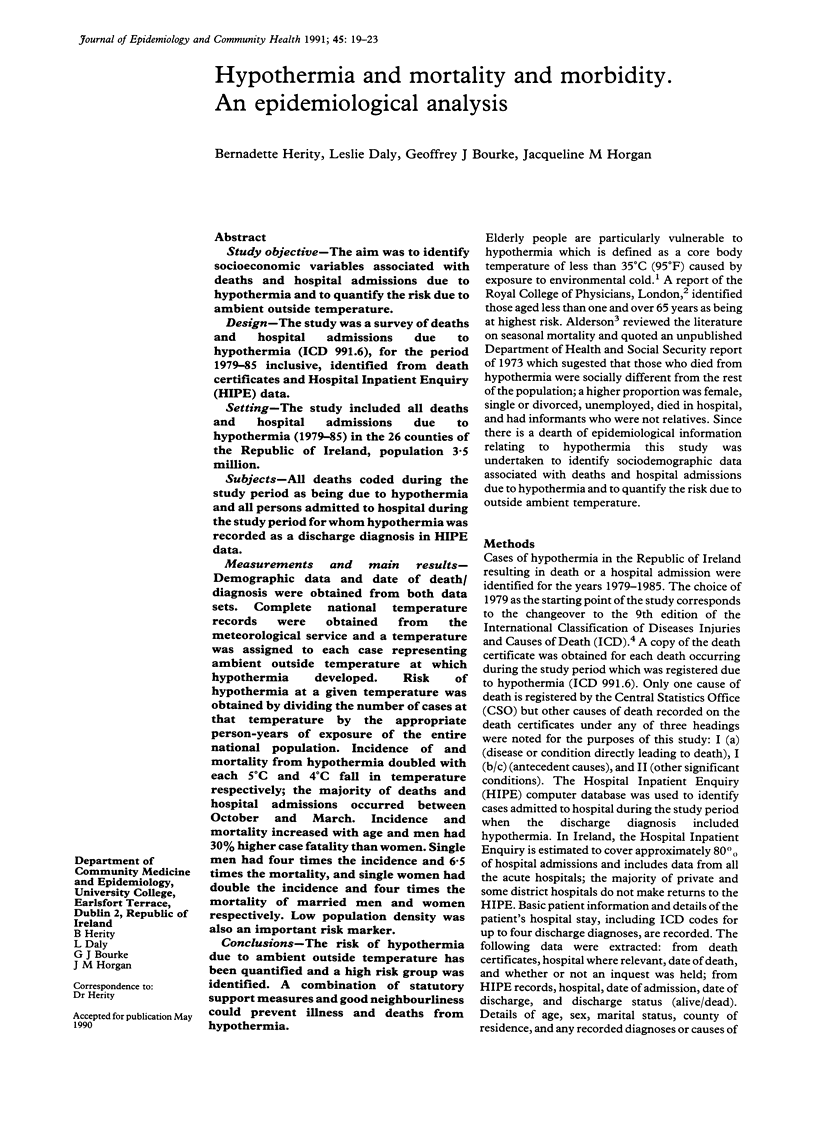
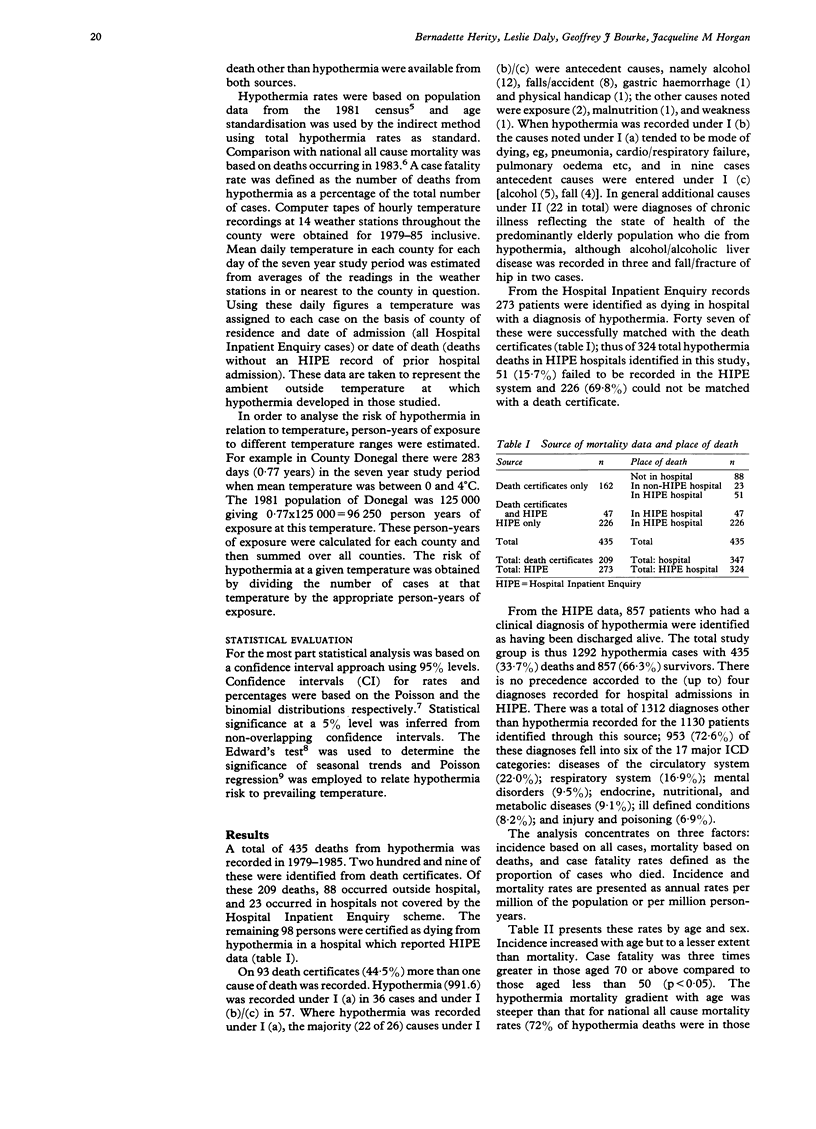
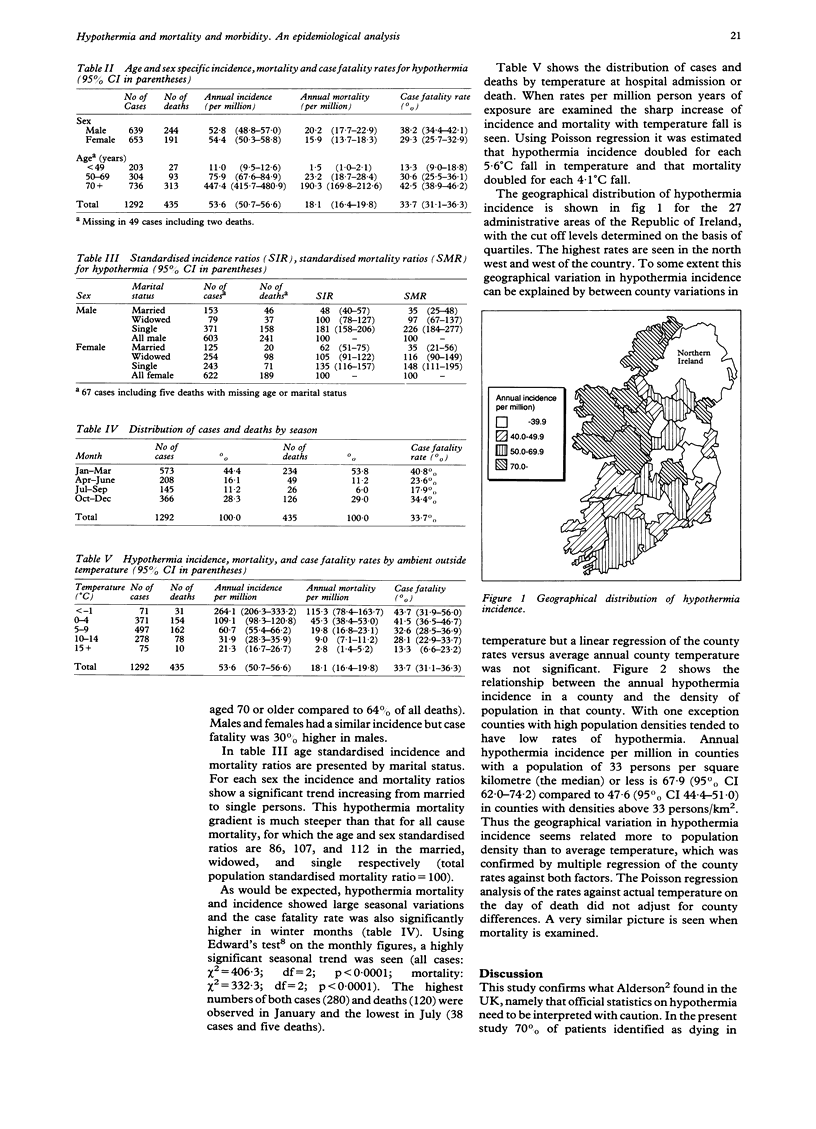
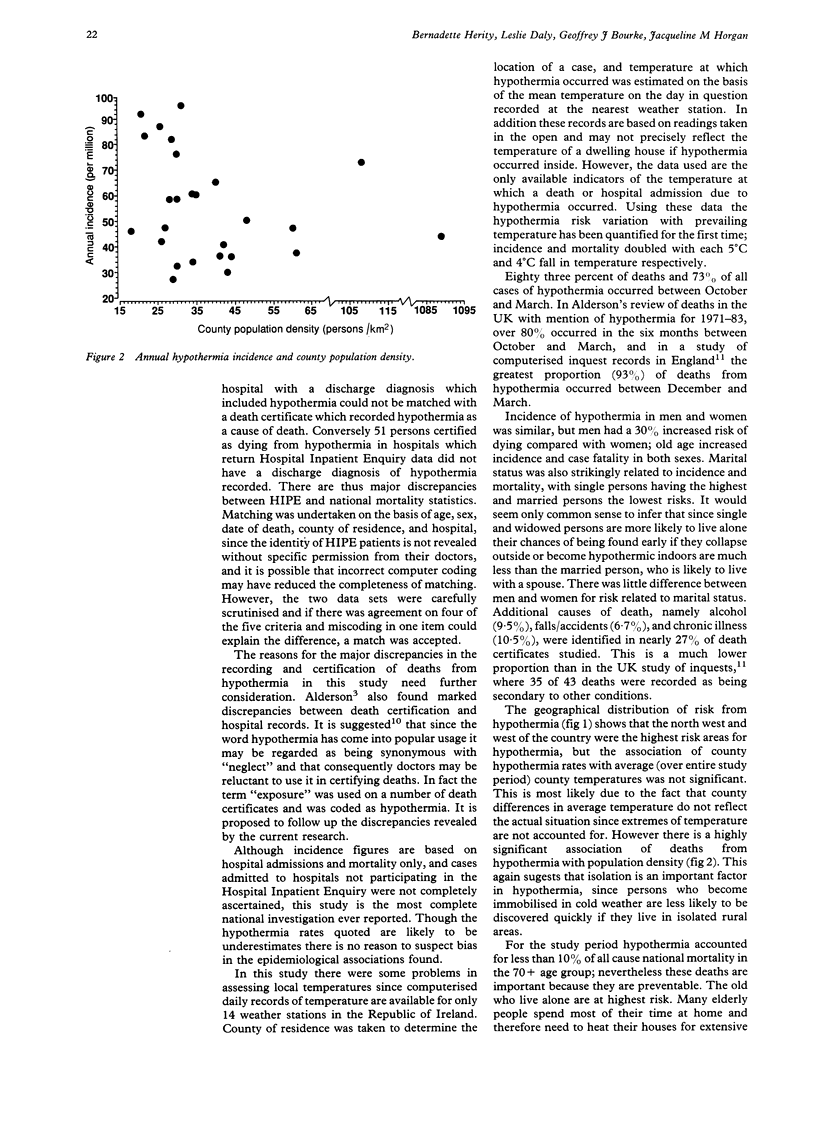
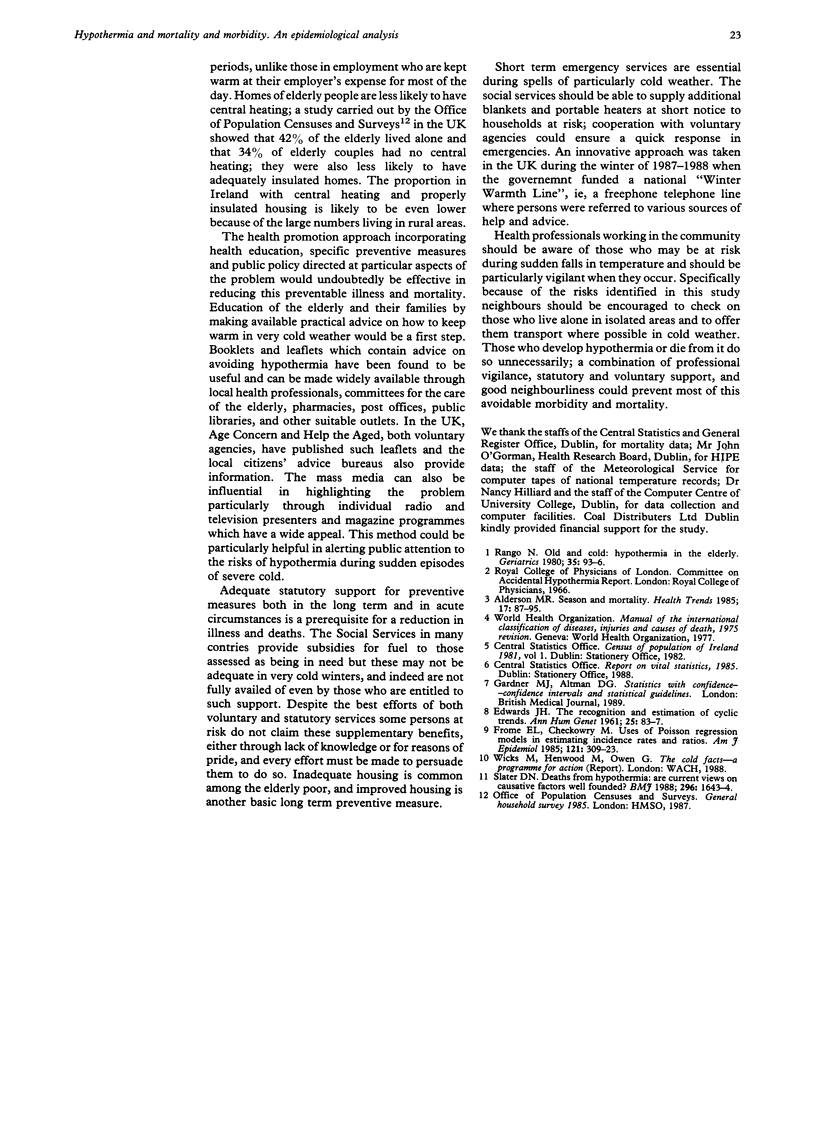
Selected References
These references are in PubMed. This may not be the complete list of references from this article.
- EDWARDS J. H. The recognition and estimation of cyclic trends. Ann Hum Genet. 1961 May;25:83–87. doi: 10.1111/j.1469-1809.1961.tb01501.x. [DOI] [PubMed] [Google Scholar]
- Frome E. L., Checkoway H. Epidemiologic programs for computers and calculators. Use of Poisson regression models in estimating incidence rates and ratios. Am J Epidemiol. 1985 Feb;121(2):309–323. doi: 10.1093/oxfordjournals.aje.a114001. [DOI] [PubMed] [Google Scholar]
- Rango N. Old and cold: hypothermia in the elderly. Geriatrics. 1980 Nov;35(11):93–96. [PubMed] [Google Scholar]
- Slater D. N. Death from hypothermia: are current views on causative factors well founded? Br Med J (Clin Res Ed) 1988 Jun 11;296(6637):1643–1644. doi: 10.1136/bmj.296.6637.1643-a. [DOI] [PMC free article] [PubMed] [Google Scholar]


